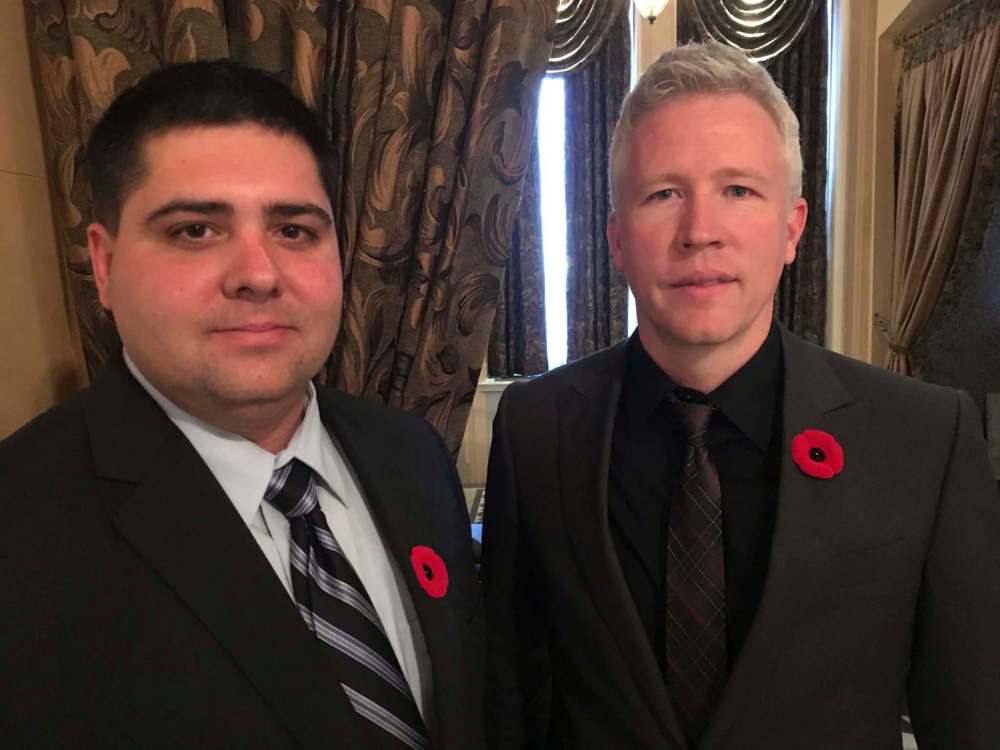Border officials on alert due to Trump, meeting told
Manitoba's temporary shelter is helping 60 to 80 border crossers a month
Advertisement
Read this article for free:
or
Already have an account? Log in here »
To continue reading, please subscribe:
Monthly Digital Subscription
$1 per week for 24 weeks*
- Enjoy unlimited reading on winnipegfreepress.com
- Read the E-Edition, our digital replica newspaper
- Access News Break, our award-winning app
- Play interactive puzzles
*Billed as $4.00 plus GST every four weeks. After 24 weeks, price increases to the regular rate of $19.00 plus GST every four weeks. Offer available to new and qualified returning subscribers only. Cancel any time.
Monthly Digital Subscription
$4.75/week*
- Enjoy unlimited reading on winnipegfreepress.com
- Read the E-Edition, our digital replica newspaper
- Access News Break, our award-winning app
- Play interactive puzzles
*Billed as $19 plus GST every four weeks. Cancel any time.
To continue reading, please subscribe:
Add Free Press access to your Brandon Sun subscription for only an additional
$1 for the first 4 weeks*
*Your next subscription payment will increase by $1.00 and you will be charged $16.99 plus GST for four weeks. After four weeks, your payment will increase to $23.99 plus GST every four weeks.
Read unlimited articles for free today:
or
Already have an account? Log in here »
Hey there, time traveller!
This article was published 10/11/2017 (2910 days ago), so information in it may no longer be current.
With the legal status of nearly one million immigrants in the United States up in the air, Manitoba is keeping an ear to the ground for people entering Canada on foot — literally.
“We have ground sensors, seismic sensors,” RCMP Sgt. Cory Myers said of the integrated border program enforcement team, listing some of the tools it uses to patrol the 520-kilometre stretch of the Canada-U.S. border in Manitoba.
He and Canada Border Services Agency (CBSA) counterpart Chief Ben Tame spoke at a Manitoba Criminal Justice Association conference Thursday, about their roles and the growing number of asylum seekers walking into Canada in recent years.

The 2016 election of U.S. President Donald Trump was followed by a spike in the number of refugee claimants picked up by RCMP near the Manitoba border community of Emerson, from 19 in January to 170 in March. Since summer, there have been around 80 arrivals a month.
Border authorities and resettlement agencies in Manitoba are on alert again, after recent announcements the Trump administration plans to remove the temporary protected status of 300,000 immigrants in the next 14 months, and to deny permanent residence to those who arrived as children of undocumented migrants.
“If there’s a big flood, I don’t know what we’re going to do,” said Abdikheir Ahmed, director of Immigration Partnership Winnipeg. He said the provincial government’s temporary shelter at Gretna, where refugee claimants are taken after they’re picked up by the RCMP and screened by CBSA, is helping by taking in about 60 to 80 asylum seekers a month.
“If that’s overwhelmed, I don’t know what’s going to happen.”
Canada’s border security isn’t at risk when there’s a surge in asylum seekers, the RCMP and CBSA said.
“It’s been growing year after year, but it’s nothing new to us,” said Myers.
In 2013, there were fewer than 80 border-crossers intercepted in Manitoba. In 2014, it rose to nearly 140. In 2015, there were about 230 and in 2016, there were more than 400.
In the first nine months of 2017, there were more than 900 border incursions, Myers said.
He talked about the journey for many that started thousands of kilometres away from Canada and the high price people paid to get to Manitoba, including thousands of dollars to smugglers and some losing body parts to frostbite during the final leg of the journey.
One Ghanaian woman died of hypothermia at Noyes, Minn., close to the Canadian border.
Most arrive in good health, with their identity documents, but some come with nothing, Myers said.
They’re taken to the CBSA and aren’t released until they’re screened and cleared, Tame said.
“We need to know who we’re dealing with,” Tame said.
For example, the CBSA checks criminal backgrounds, fingerprints and databases to see if someone has a criminal background, he said.
“We’ve made a commitment to the Canadian public that no asylum seeker leaves until a risk assessment is done.”
It’s not up to the CBSA to grant protection to a refugee claimant, he said. “We’re determining whether or not they’re eligible to make a claim.”
Only after they’re identified, pass the risk assessment and eligible to make a refugee claim, are they free to leave and apply for asylum. “We have a process that’s very secure,” Tame said.
carol.sanders@freepress.mb.ca

Carol Sanders
Legislature reporter
Carol Sanders is a reporter at the Free Press legislature bureau. The former general assignment reporter and copy editor joined the paper in 1997. Read more about Carol.
Every piece of reporting Carol produces is reviewed by an editing team before it is posted online or published in print — part of the Free Press‘s tradition, since 1872, of producing reliable independent journalism. Read more about Free Press’s history and mandate, and learn how our newsroom operates.
Our newsroom depends on a growing audience of readers to power our journalism. If you are not a paid reader, please consider becoming a subscriber.
Our newsroom depends on its audience of readers to power our journalism. Thank you for your support.
History
Updated on Friday, November 10, 2017 1:15 AM CST: fixes typo in headline


